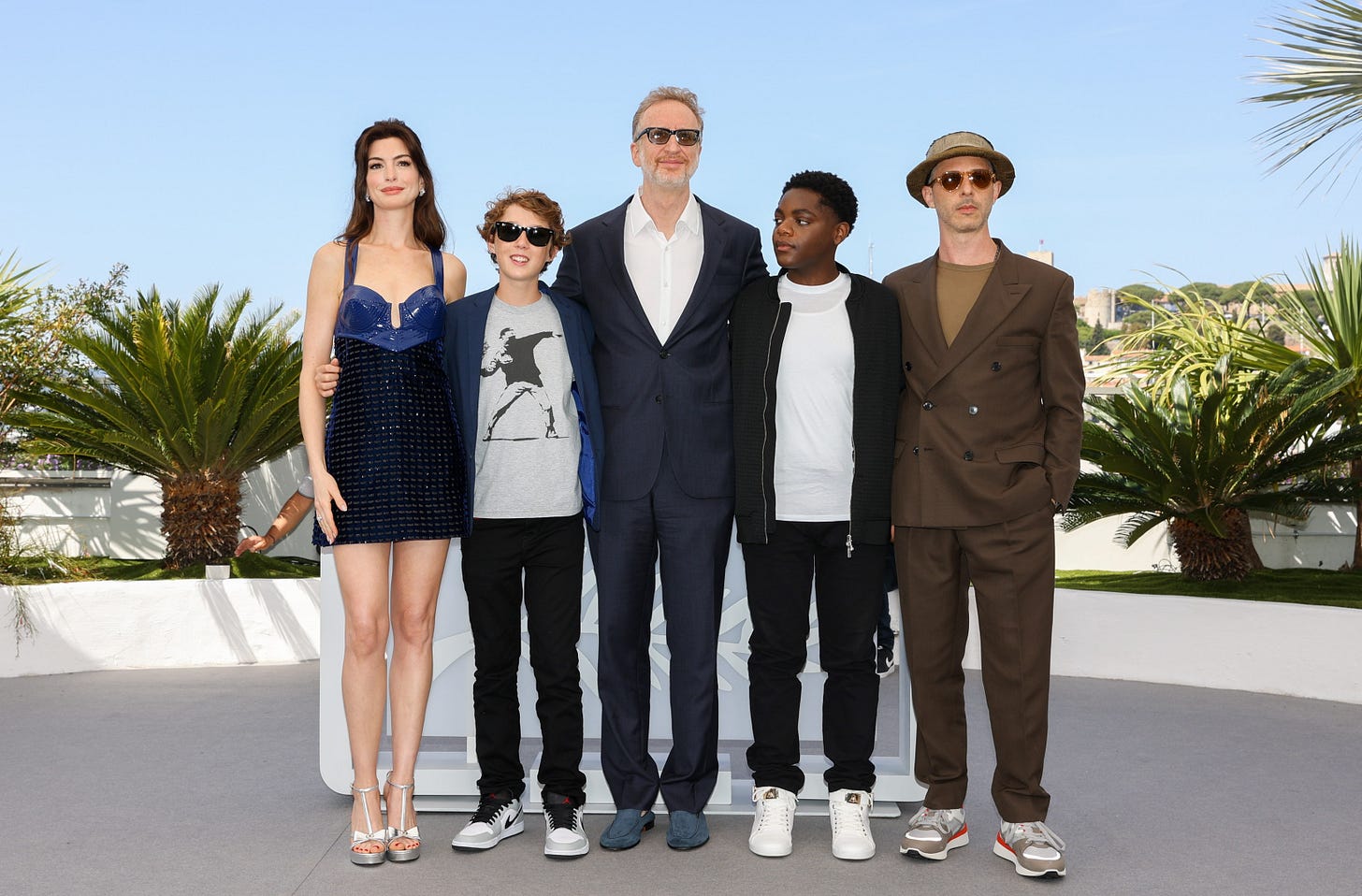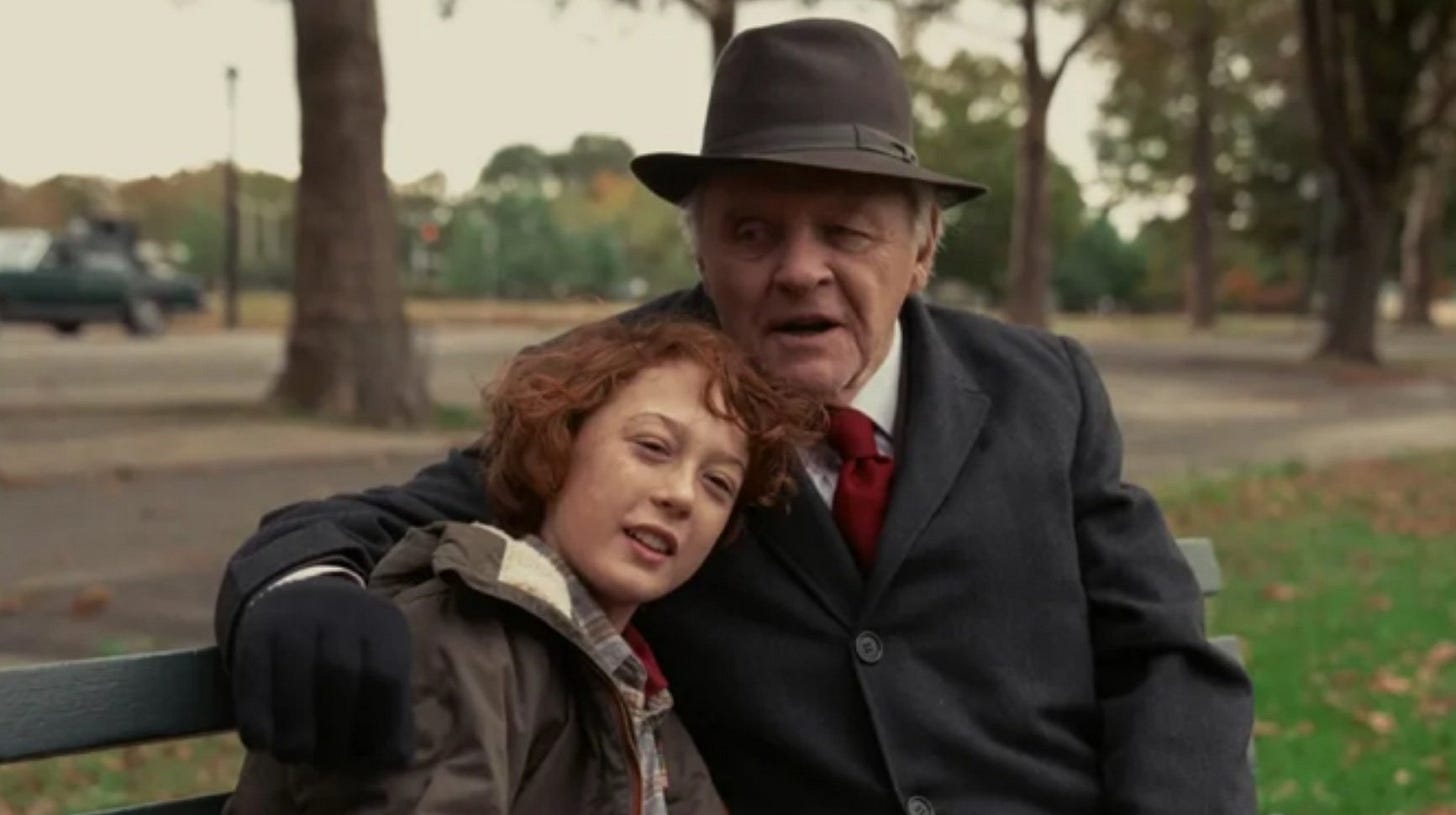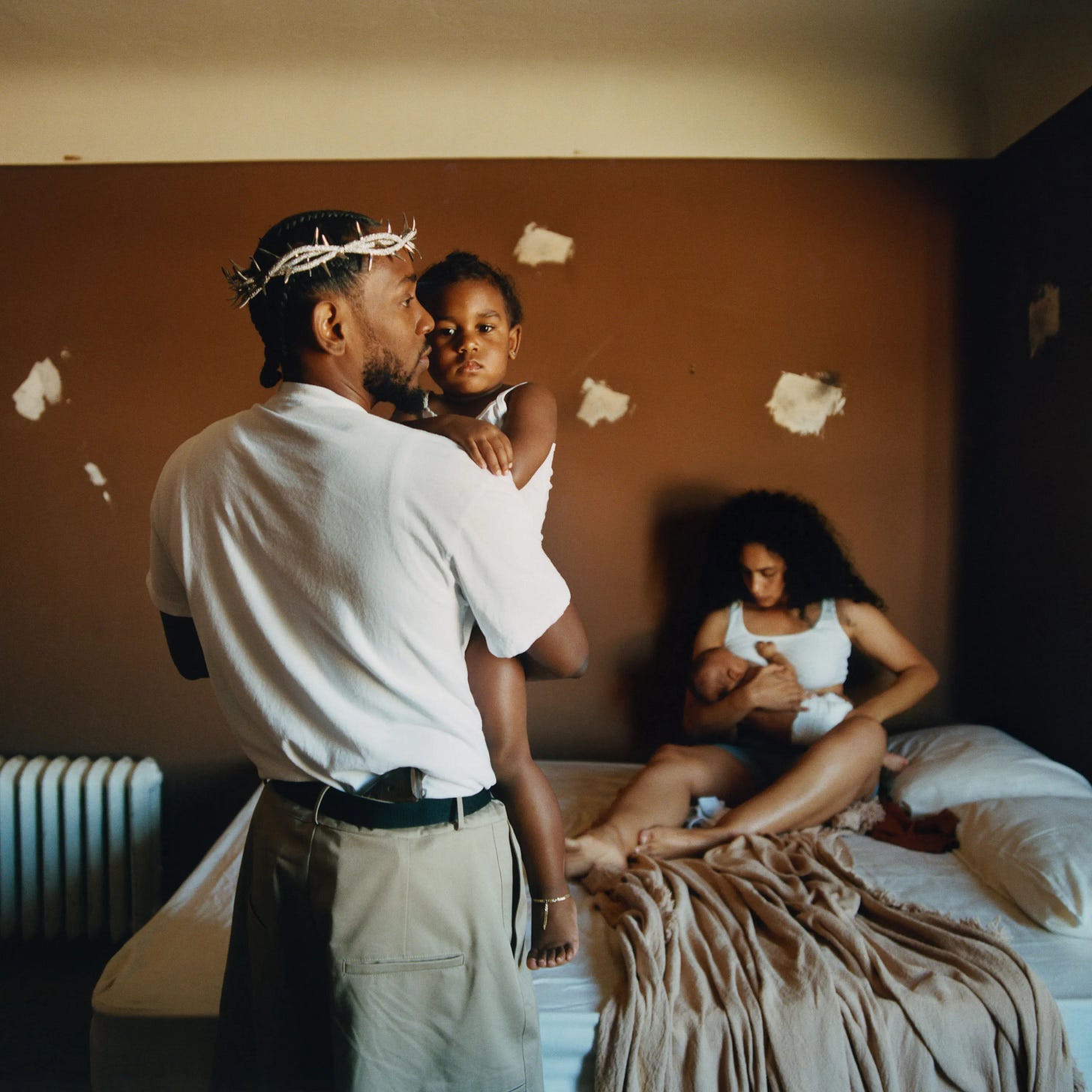Cory's Reads #22: As It Was
More than just a Harry Styles song. Reactions from Cannes and beyond.

You knooooow it’s not the saaame as it waaaaas.
And yet, we cannot quite forget the past. That moment forever informs the present. Are we brave enough to confront it?
Some artists are.
Kendrick Lamar’s latest masterpiece of an album, Mr. Morale & the Big Steppers, wrestles with the rapper’s past (and present) in ways seemingly designed to draw discomfort from even his most loyal listeners. The album might be Kendrick’s most sonically accessible — catchy choruses abound on songs like “Rich Spirit” and “Savior” — but the lyrics within challenge our understanding of not only Kendrick himself, but all the fiery topics he has touched on over the years. As Kendrick dissects his own mythology, he welcomes an honesty rarely seen across all art forms today. In a culture increasingly fixated on abstract aspirations of civility and protection, Lamar manages to extend the kind of respect so necessarily baked into such societal ambitions, whilst refusing to abide by the boundaries that unnecessarily come with them.
And that’s an understandably difficult dichotomy to accept. It may seem paradoxical, hypocritical even, for Kendrick to chronicle his journey towards acceptance of the LGBTQIA+ community, while still spouting out homophobic slurs and misgendering his own family members. But the Compton native’ s admission to his own homophobic past is a rather brave offering in an environment that would sooner pretend such character arcs could not exist. Growth and change aren’t exactly encouraged in today’s cultural climate, so as Kendrick reaches deep into his childhood and struggles to recognize his own reflection, he risks the ire of TikTokers and Twitter users the world over. Indeed, “Auntie Diaries” has been the subject of numerous online debates.
Is it offensive? Genius? Insensitive? Vulnerable?
Like many other tracks on Mr. Morale, “Auntie Diaries” draws a line between Kendrick’s childhood and his transition into parenthood. He remembers how things were. And he doesn’t want them to be the same. So when he raps:
“‘F*****, f*****, f*****’ we ain't know no better
Middle school kids with no filter, however…”
It’s an admission of guilt and regret. He offers a justification to which many of us may embarrassingly relate, but still recognizes that is no excuse.
Kendrick’s confident acknowledgment of the past is quite clear in its messaging, and likely doesn’t need my coming to its defense. But I mention it here because it comes from an artist I respect dearly, an artist whose art I consider to carry with it a complete and total understanding of what art is capable of.
And so as the entirety of his latest album conveniently soundtracked my first-ever excursion to the Cannes Film Festival in southern France, it made it that much more apparent when I was experiencing a piece of art fully aware of its own potential.
I left Cannes before I could see several of the festival’s heaviest hitters (I impatiently await the opportunity to watch David Cronenberg’s Crimes of the Future or Park Chan-wook’s Decision to Leave) so I won’t make any claims about the festivals “winners and losers” (although I will publicly declare my disappointment in George Miller’s much-anticipated Three Thousand Years of Longing. Let’s have that conversation another time). But what I can say is that I very much enjoyed James Gray’s autobiographical Armageddon Time, as much as anyone can enjoy a film that makes your throat lock and lips quiver for two hours.
Seriously, this thing wrecked me! I rarely cry at a film, no matter its emotional intensity, but Armageddon Time has an authenticity and a ruthlessness to it that injects its simple coming-of-age trappings with such urgency, you’d be forgiven for confusing the film’s 1980s setting with this very moment. Gray’s interest in “as it was” inevitably gives way to a reflection on “as it is,” culling together issues of race, religion, and class in ways these kinds of films rarely do. Perhaps the best thing I can say about Armageddon Time is that it is the ultimate antidote to Kenneth Branagh’s autobiographical Belfast, which is not to speak ill of Branagh’s understandably saccharine tone, but to pay tribute to Gray’s holds-no-barred recognition of his own family’s warts.
The films will inevitably draw further comparison to one another, as will many of the several other autobiographical films to come (a trend I wrote about just a few issues ago). Putting the two films into conversation with one another does give way to a worthwhile discussion surrounding the relationship between remembering and romanticizing, both of which likely retain some merit. But Branagh’s sentimental recollection of his past still feels a bit…safe when compared to Gray’s outright rejection of sentimentality and nostalgia. Perhaps the most appropriate company for Gray’s revisit to his childhood is not Belfast or Roma or the litany of other similar films en route (just imagine the kind of delicious sap Spielberg will so lovingly deliver with his forthcoming The Fabelmans), but a much older and more iconic riff on this sort of thing: Francois Truffaut’s The 400 Blows.
As is the case with Truffaut’s work, Armageddon Time is far from devoid of the childhood woes and wonders that tend to define any film in the genre. At the film’s core is the relationship between young Paul (Michael Banks Repeta) and his grandfather Aaron (Anthony Hopkins), not unlike the central relationship between Buddy and his grandparents in Belfast. Once you get past trying to accept Anthony Hopkins as an old Jewish patriarch, the Welsh icon is predictably great, and his character is a complex prism through which we come to understand the harshly tender world of Armageddon Time.
Paul admires his grandfather more than anyone else in his life. The elder Graff is the only one who seems to understand and endorse Paul’s artistic aspirations, which makes it all the more confusing for Paul when his parents move him into a private school per his grandfather’s request. Paul despises his parents for the decision, and threatens to run away as a result. Only when his grandfather shares his life story and explains the decision does Paul calm down and consider this new path towards his future. After an adolescence marred by anti-Semitism, Aaron arrived at America’s doorstep, changing his name at Ellis Island and assimilating into American culture in hopes of establishing himself as the wealthy patriarch of a multigenerational Jewish family. Aaron recognizes the duality of being Jewish: anti-Semitism maintains a looming presence, but Jews can more easily disappear into the masses compared to, say, a young Black boy like Paul’s best friend Johnny (Jaylin Webb). Johnny’s friendship is one of the main reasons Paul so desperately clings onto his life back in the public school system. Grandpa Graff is the rare family member to support Paul’s befriending of a Black boy (that covertly pernicious flavor of 1980s racism pervades much of Armageddon Time) but that doesn’t stop him from enabling his grandson to own his privilege as a member of a wealthy white family and escape to the Kew-Forest School in Queens (where one of the film’s most shocking and illustrative cameos takes place). There’s a kernel of harsh truth to Aaron’s wisdom, but Paul must still negotiate his admiration for his grandfather with the revelation that the man might just be out of touch.
(In Robert Eggers’ The Northman, Amleth faces this same dilemma on a much larger scale. If we’re not comfortable confronting how things were in 1980 AD, perhaps 895 AD will do the trick.)

Gray has said that he wrote many of Armageddon Time’s scenes from memory, hoping to maintain as much accuracy as possible. With that ambition in mind, the director’s complicated recollection of his life doubles as a sobering reminder of a not-so-bygone era in which Reaganism divides the country more than simple partisan politics ever could, and racism recedes indoors to classrooms and dining tables. Even Branagh’s brand of “as it was-ness” refrains from capturing the absolute horrors of The Terrors in Northern Ireland — and to be fair, his project is an altogether different one — but Gray is unafraid to pay tribute to the era that made him by recalling its long dark shadow.
And that shadow scares us. I get it! But shadows cannot be outrun. They follow us wherever we go. And so artists like Kendrick Lamar and James Gray turn around and stare theirs in the face in hopes that we all may do the same.
And yet our reluctance remains. Perhaps one of the most pitch-perfect recreations of a bygone era came at the end 2021 in Paul Thomas Anderson’s Licorice Pizza. I (alongside all you loyal readers) have made my love for that film clear, but I also recognize the heavy backlash to the film’s depiction of anti-Asian racism and, more prominently, a quasi-relationship between an adult and a minor. The former criticism is a valid one, and far be it from me to refute anyone who might have felt offended by John Michael Higgins’ absurd rendition of real-life restauranteur Jerry Frick, whose Japanese fetish was very much a thing.


With that being said, PTA’s utterly complete portrait of the San Fernando Valley circa 1973 leans on these kinds of depictions! Frick is quite obviously a piece of shit; Licorice Pizza does little to undermine this point. The absolute shock of his behavior towards his Japanese wives(!) should serve as one of several reminders in Licorice Pizza that we are entering a world unlike (but not too unlike) the one we see around us today.
The central relationship between 25-year-old Alana (Alana Haim) and 15-year-old Gary (Cooper Seymour-Hoffman) is a bit different in that the film doesn’t quite paint it as overtly inappropriate. There are many factors at play here that complicate the true nature of Alana and Gary’s relationship. Alana’s status as the older of the two is interesting by itself, particularly as you contrast the young Gary with all the older men who reveal themselves as creeps and manipulators throughout Licorice Pizza. Alana herself questions her interest in Gary, held back by an embarrassment of sorts. She is, of course, a young woman, still very much working through the trials and tribulations of adulthood. It’s also important to emphasize there is no sexual component to Gary and Alana’s relationship, and any attempts to sexualize Alana throughout the film are met with derision and humiliation. A discomfort with the age gap between the pair may linger, and understandably so. But therein lies the tension PTA is exploring with Licorice Pizza.
Attraction is involuntary. Gary is kind to Alana, until he isn’t. She overlooks at least one decent guy — her coworker Brian (Nate Mann) — because she is enamored with Gary’s perceived power and social capital. Licorice Pizza is filled with all kinds of complex contradictions and brutal honesties that subvert our initial understanding of its central relationship. Licorice Pizza is one of the most beautiful love stories I’ve ever seen. It’s also gross and unnerving and tense.
But hey, that’s how it was.
So much of what I write about on my Substack can be culled together into one simply inquiry: what is art supposed to do? And I pray that I never arrive at a definitive answer to that question because art is surely meant to do more than just one thing. But I do know that art should always be honest, even brutally so if the occasion calls for it. We can shy away from that honesty — from homophobic and racist pasts that subtly inform the present or unconventional relationships that embarrassingly reflect our own — but it will still be there when we open our eyes.
Can we imagine a better world? Absolutely. And there’s a brave sort of honesty in that as well. There are many ways to skin a cat, and artists would be wise to keep on employing them all. But we as consumers, as partners in the meaning-making process, would be even wiser to meet those artists where they’re at, and recognize the strokes of bravery and vulnerability that go into the creative process. If we’re lucky, some of that bravery might just rub off on us as well.
Thanks for reading this edition of Cory’s Reads. I just want to use this space to express my condolences, my sorrow, and my rage in response to the tragic murders carried out across the U.S. over the last month. Words understandably mean little to the victims and their families in Uvalde, Buffalo, and Laguna Woods, and I am hesitant to contribute to the noise any more than is necessary. But I feel it necessary to use this platform to make my stance on these tragedies unequivocally clear…
We need to reinstate the ban on assault weapons. We need to strengthen background checks on all gun purchases. We need to recognize the very real threat that white supremacy presents to every single one of us. Right now, we are a broken country, terrified of our shadow. And every single one of us should be fucking fed up with it all.
Until next time,
Cory




